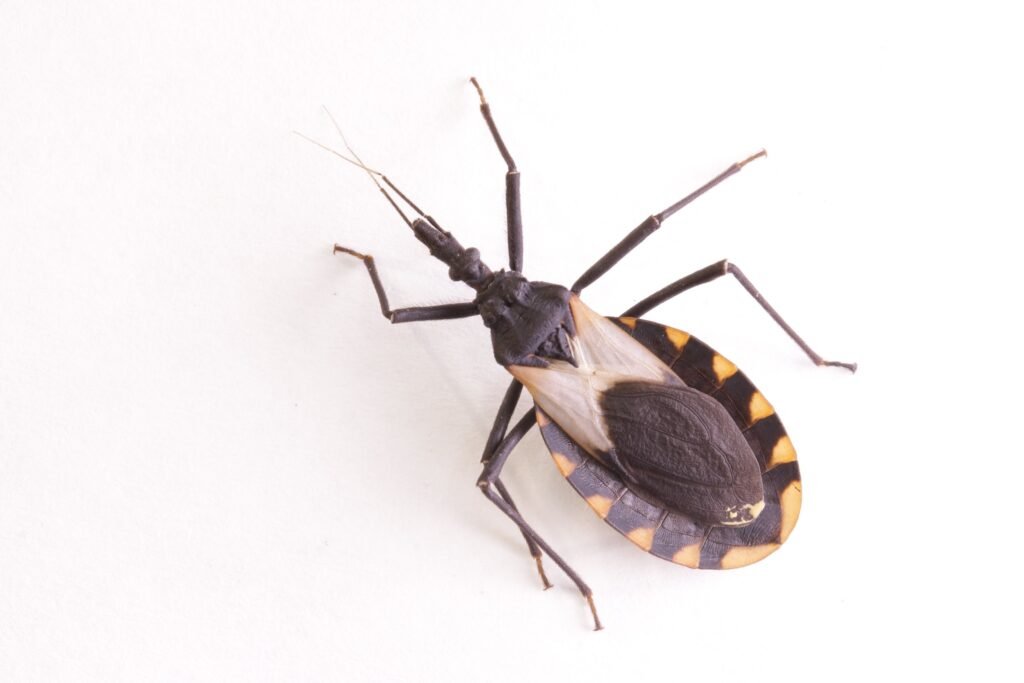Chagas Disease: An Emerging Threat in Texas
When discussing tropical diseases, many envision distant lands, often overlooking the reality that some are quietly spreading in the United States— particularly in Texas. One of the most noteworthy among these is Chagas disease, a potentially serious illness that shadows its way into public consciousness, unnoticed yet impactful.
Understanding Chagas Disease
Chagas disease, also known as American Trypanosomiasis, is triggered by the parasite Trypanosoma cruzi. This parasite is predominantly transmitted to humans through kissing bugs—insects that feed on human blood. Known for their penchant for biting near the mouth or eyes during the night, these bugs can also spread the parasite through their feces. Once a bug bites and defecates near an open sore or mucous membrane, T. cruzi can enter the bloodstream, posing a significant health threat.
Beyond insect bites, Chagas disease has other transmission routes: it can be spread via blood transfusions, organ donations, maternal transmission during childbirth, or through contaminated food and beverages. Alarmingly, infected individuals may remain asymptomatic for years, complicating early diagnosis and timely treatment.
Scope of the Problem in the U.S.
Currently, it is estimated that 300,000 people in the United States are living with Chagas disease. While it has long been tied to regions in South and Central America, it has now established a foothold in areas such as the Rio Grande Valley (RGV) in Texas. Recent studies reveal that approximately 93% of kissing bugs tested in Hidalgo County are positive for T. cruzi, indicating a shift toward local transmission and raising urgent public health concerns.
The Dual Phases of Chagas Disease
Chagas disease evolves through two phases: acute and chronic.
Acute Phase
This phase occurs shortly after infection, where symptoms are usually mild or non-existent. Common signs may include fever, fatigue, and swelling at the bite site, known as a chagoma. These symptoms can easily be confused with other viral infections, which often leads to missed diagnoses.
Chronic Phase
The chronic phase may last for decades, during which the disease often remains asymptomatic. However, about 30% of infected individuals will eventually experience severe complications, including heart disease or digestive issues. Irregular heartbeats, cardiomyopathy, and even sudden cardiac death may manifest without prior warning, underscoring the disease’s silent yet lethal progression.
The Risk Factors in the Rio Grande Valley
The Rio Grande Valley is particularly susceptible to Chagas disease for multiple reasons:
- Favorable Climate: The warm and humid weather of the region supports large populations of kissing bugs.
- Housing Conditions: Many homes in low-income neighborhoods have structural vulnerabilities, such as cracks and gaps, that facilitate insect entry.
- Cross-Border Movement: Frequent travel between Texas and Mexico increases exposure opportunities to infected individuals and animals.
- Low Awareness Among Health Providers: Many healthcare professionals lack adequate training in tropical diseases, leading to missed diagnoses.
- Limited Access to Healthcare: Barriers such as lack of insurance, transportation challenges, and language differences hinder timely medical attention.
Importance of Early Diagnosis
Diagnosing Chagas disease is intricate due to the need for at least two independent serological tests for confirmation. However, early detection enhances treatment efficacy and prevents severe health ramifications. Currently, screening is recommended for individuals who have lived in endemic regions or have a family history of the disease, as well as for those donating blood or organs. Unfortunately, explicit screening guidelines are lacking for residents in high-risk areas like the RGV.
Effective Treatment Options
While treatment is available and significantly more effective during the acute phase, it remains underutilized. Two FDA-approved medications, Benznidazole and Nifurtimox, can successfully treat Chagas disease, particularly if administered early. However, limited availability of these drugs and a shortage of knowledgeable healthcare providers create obstacles, contributing to a significant treatment gap in managing this disease.
Prevention Strategies to Combat Chagas Disease
Preventing Chagas disease within communities is a multifaceted approach. Individuals can actively take measures to reduce kissing bug exposure by sealing cracks in walls, installing screens on windows, and maintaining a clutter-free environment that limits hiding spots for insects.
Public Health Education
Community awareness is crucial. Public health departments and local clinics can provide essential information regarding the identification of kissing bugs and safe reporting measures. Increasing knowledge about Chagas disease symptoms and transmission can significantly affect early detection and prevention.
One Health Approach
A One Health approach, which acknowledges the interconnectedness of human, animal, and environmental health, is vital. Kissing bugs often feed on various animals that act as reservoirs for T. cruzi, making it critical to understand and manage these interactions to control the spread of the disease.
Conclusion: Chagas Disease is Here to Stay
In an era of climate change and increased global travel, diseases once confined to tropical regions are now appearing in unexpected locales. Chagas disease is no longer a remote threat; it affects communities right here in Texas. By enhancing testing programs, improving healthcare accessibility, raising public awareness, and encouraging ongoing research, we can take significant steps to prevent this insidious disease from taking root in South Texas.
For more information on Chagas disease, visit the CDC Chagas Disease page. Together, we can address this emerging public health crisis.


